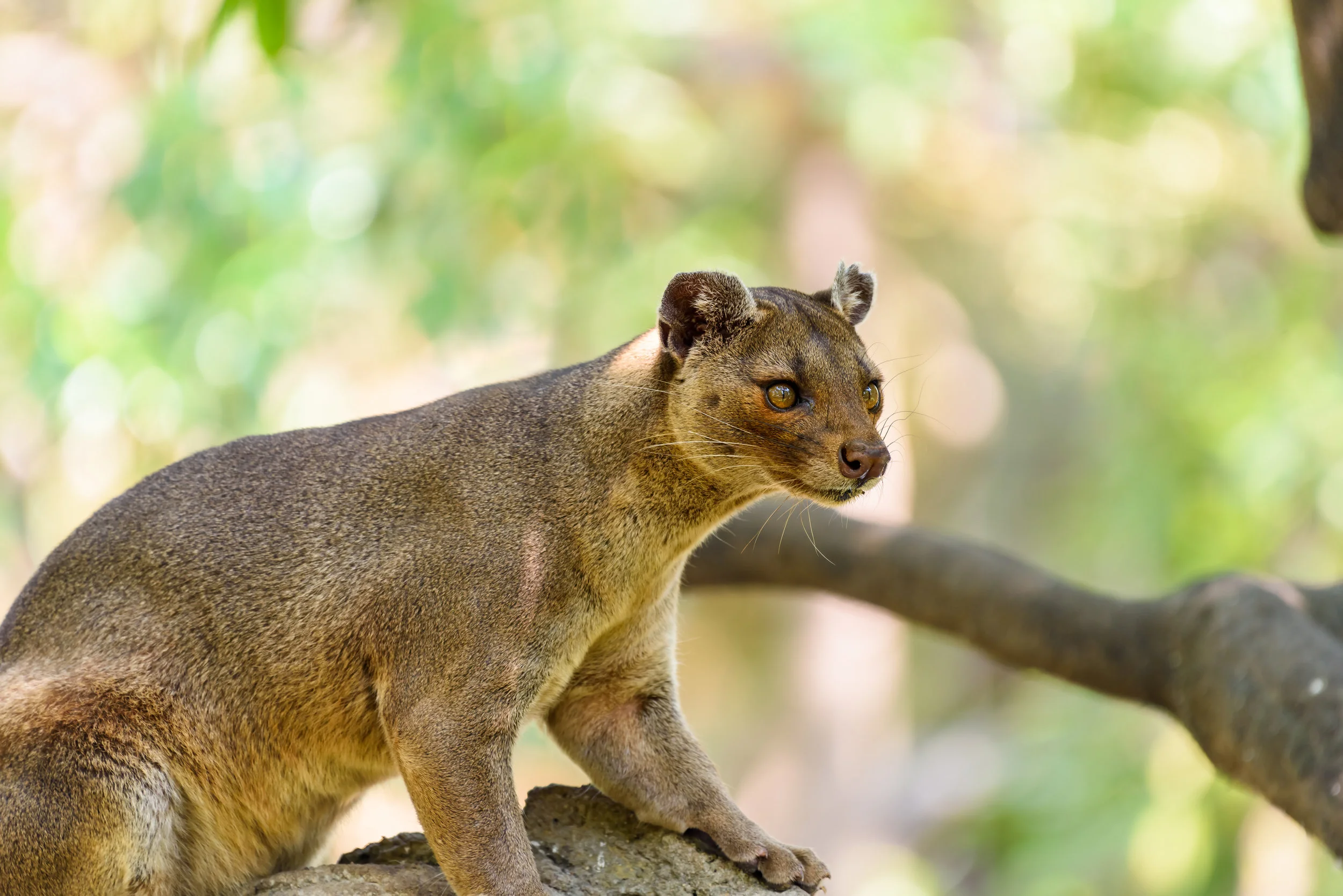Fossa
"Treetop Paws" by Allison Theus (digital)
“I chose the fossa for the unique body plan and interesting facial features.”
Your purchase is helping Expedition Art and Saving Species purchase land in Sumatra! Learn more about the project.
Habitat
The fossa is found exclusively on the island of Madagascar, in heavily forested areas with limited human disturbance. Despite being found both in the trees and on land, it prefers forest over non-forest habitats.
Family Life
Fossas are primarily solitary. During mating season in the late fall, males will engage in aggressive behavior towards one another to win the affections of the female. After a gestation period of around three months, females give birth to a litter of two to four young. Fossa reach full adulthood at four years of age, but venture away from their mothers at around a year and a half. Originally considered a nocturnal animal, they are now known to operate both during the day and night. Communication between fossa is a combination of vocalizations, body language and scent.
Lifespan
The fossa has a life expectancy of 15 years in the wild. In captivity, an individual has lived for up to 23 years, but averages closer to 20.
Hunting Habits/Diet
The fossa is Madagascar’s largest carnivore. It prefers to feed on lemurs, which provide around half of its food intake. They will also eat birds, wild pigs, frogs, rodents, lizards and domestic chickens. They hide and then ambush their prey, using their retractable claws to catch the unfortunate creature but using a swift bite to make the kill.
Population
There is no exact estimate of how many fossa live in the wild. Estimations put the population between 2,500 and 8,500 total individuals remaining.
Fun Fact
Part of the scientific name of the fossa, ferox, is a reference to its exaggerated reputation of ferocity. There are many legends surrounding the fossa from the native Malagasy populations, mostly because it is a quite enigmatic creature. Despite having mostly feline qualities, it is actually more closely related to a mongoose.
Why are they endangered?
Habitat loss is one of the primary threats to the fossa population, as well as being hunted and killed for food by the local population. Habitat fragmentation isolates populations from one another, limiting their movement. As they have a reputation for killing domesticated chickens, they are often killed as a pest.
Status
Vulnerable



